Слайд 2The term aircraft engine
refers to reciprocating and rotary internal combustion engines used

in aircraft. Jet engines and turboprops are the other common aviation power plants; while operation differs substantially, the basics here apply to all types.
Слайд 3Internal combustion piston engine
Components of a typical, four stroke cycle, internal combustion

piston engine.
E - Exhaust camshaft
I - Intake camshaft
S - Spark plug
V - Valves
P - Piston
R - Connecting rod
C - Crankshaft
W - Water jacket for coolant flow.
Camshaft - стержень ( меняющий направление движения механизма )
Spark plug - свеча зажигания
Rod-штифт
Crankshaft – коленчатый вал
Слайд 4Jet enjines
A jet engine is an engine that discharges a fast moving

jet of fluid to generate thrust in accordance with Newton's third law of motion.
Слайд 5Jet enjines
This broad definition of jet engines includes
turbojets,
turbofans,
rockets,
ramjets,

pulse jets
pump-jets,
Слайд 6Jet enjines
In common usage, the term generally refers to a gas turbine

Brayton cycle engine, an engine with a rotary compressor powered by a turbine, with the leftover power providing thrust.
Слайд 7The first look
Basically, a gas turbine engine consists of five major sections:

an inlet duct,
a compressor,
a combustion chamber (or chambers),
a turbine wheel (or wheels),
an exhaust duct.
Слайд 11Air intake
Preceding the compressor is the air intake (or inlet), which is

designed to recover, as efficiently as possible, the ram pressure of the streamtube approaching the intake. Downstream of the intake, air enters the compressor.
Слайд 12Compressor or Fan
The compressor is made up of stages. Each stage consists

of vanes which rotate, and stators which remain stationary.
As air is drawn deeper through the compressor, its heat and pressure increases.
Energy is derived from the turbine (see below), passed along the shaft.
Vane - лопатка
Слайд 13Comressor
The compressor, which rotates at very high speed, adds energy to the

airflow, at the same time squeezing it into a smaller space, thereby increasing its pressure and temperature.
Слайд 15Common:
Shaft — The shaft connects the turbine to the compressor, and runs

most of the length of the engine.
Слайд 17Combustor
or Can
or Flameholders
or Combustion Chamber —
This is a

chamber where fuel is continuously burned in the compressed air.
Слайд 18Combustion chamber
A combustion chamber is the part of an engine in which

fuel is burned.
Слайд 19A ring of can type combustors circles the mid section of this
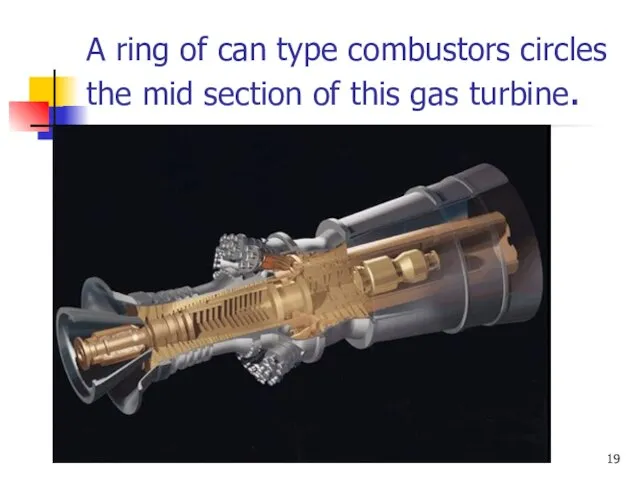
gas turbine.
Слайд 21Turbine
A turbine is a rotary engine that extracts energy from a fluid
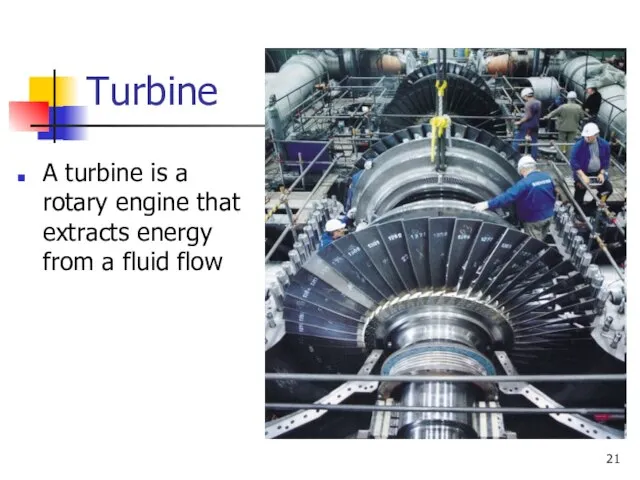
flow
Слайд 22A Pelton wheel
also called a Pelton turbine, is one of the most
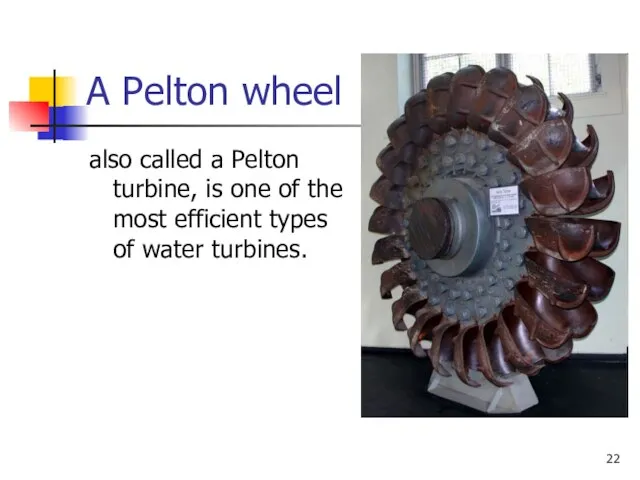
efficient types of water turbines.
Слайд 23Turbine
A gas turbine extracts energy from a flow of hot gas produced

by combustion of gas or fuel oil in a stream of compressed air.
Слайд 25An afterburner
is an additional component added to some jet engines, primarily
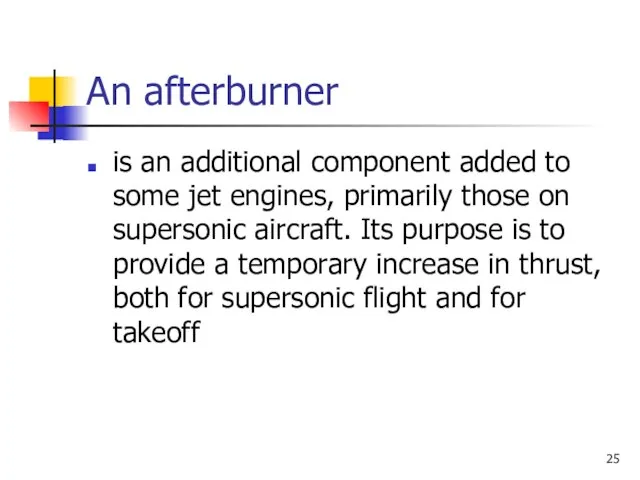
those on supersonic aircraft. Its purpose is to provide a temporary increase in thrust, both for supersonic flight and for takeoff
Слайд 27A nozzle
is a mechanical device or orifice designed to control the characteristics
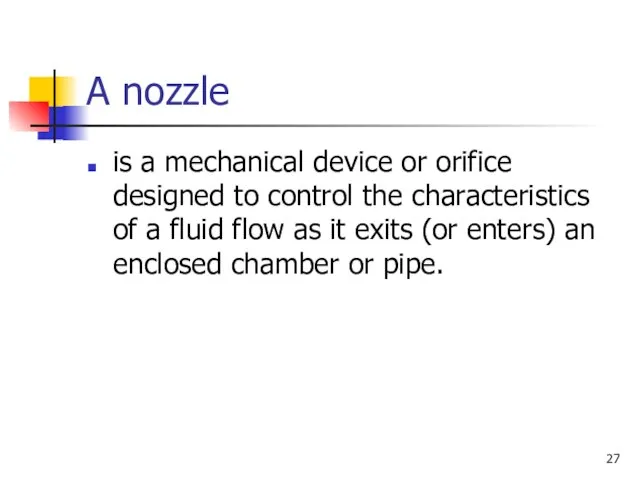
of a fluid flow as it exits (or enters) an enclosed chamber or pipe.
Слайд 28A nozzle
is often a pipe or tube of varying cross sectional area,
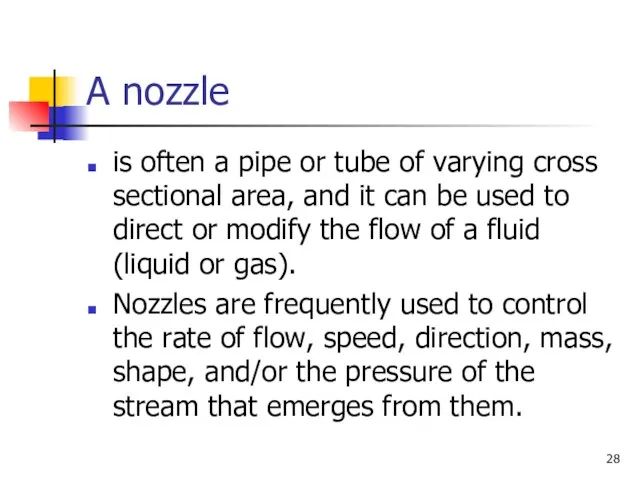
and it can be used to direct or modify the flow of a fluid (liquid or gas).
Nozzles are frequently used to control the rate of flow, speed, direction, mass, shape, and/or the pressure of the stream that emerges from them.
Слайд 32In addition to the five major sections
each gas turbine engine is equipped
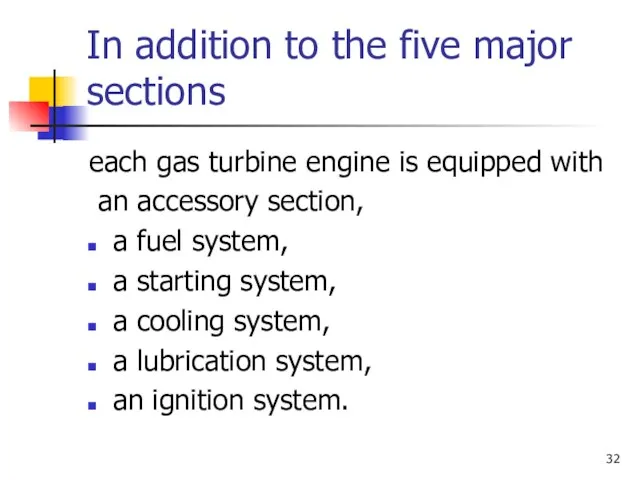
with
an accessory section,
a fuel system,
a starting system,
a cooling system,
a lubrication system,
an ignition system.
Слайд 33Cooling systems
Combustion temperatures can be as high as 3500K (5841F), above the
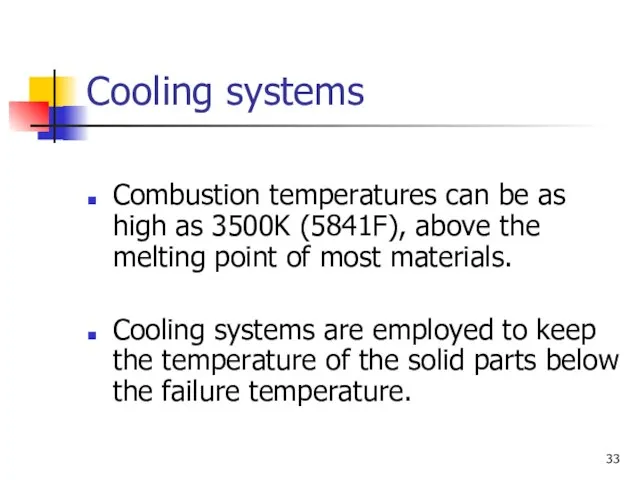
melting point of most materials.
Cooling systems are employed to keep the temperature of the solid parts below the failure temperature.
Слайд 34Fuel system
Apart from providing fuel to the engine, the fuel system is
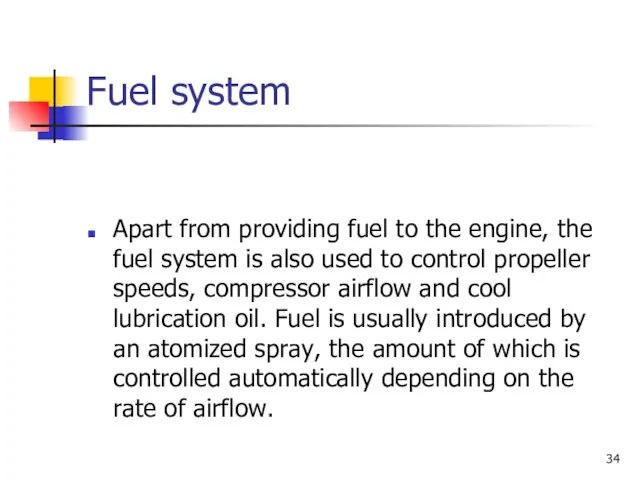
also used to control propeller speeds, compressor airflow and cool lubrication oil. Fuel is usually introduced by an atomized spray, the amount of which is controlled automatically depending on the rate of airflow.
Слайд 35Engine starting system
The fuel system as explained above, is one of the
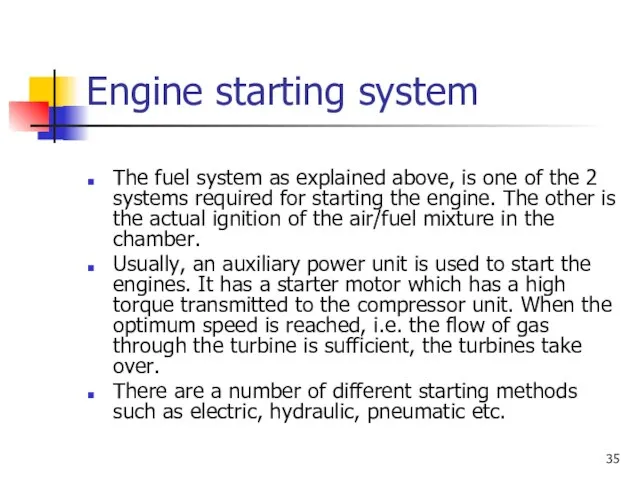
2 systems required for starting the engine. The other is the actual ignition of the air/fuel mixture in the chamber.
Usually, an auxiliary power unit is used to start the engines. It has a starter motor which has a high torque transmitted to the compressor unit. When the optimum speed is reached, i.e. the flow of gas through the turbine is sufficient, the turbines take over.
There are a number of different starting methods such as electric, hydraulic, pneumatic etc.
Слайд 36Ignition system
Usually there are 2 igniter plugs in different positions in the
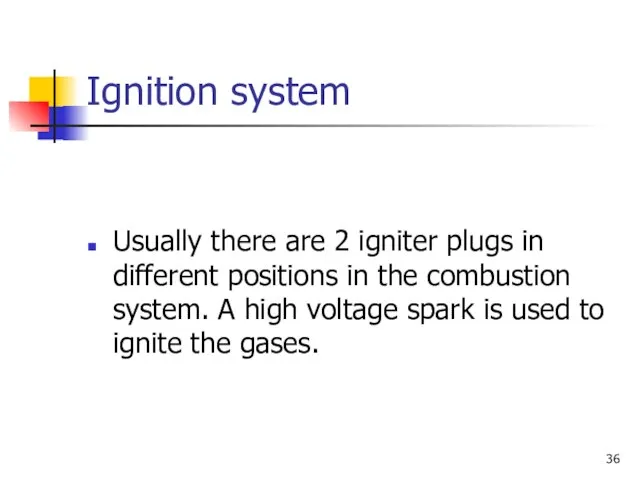
combustion system. A high voltage spark is used to ignite the gases.
Слайд 37Lubrication system
A lubrication system serves to ensure lubrication of the bearings and
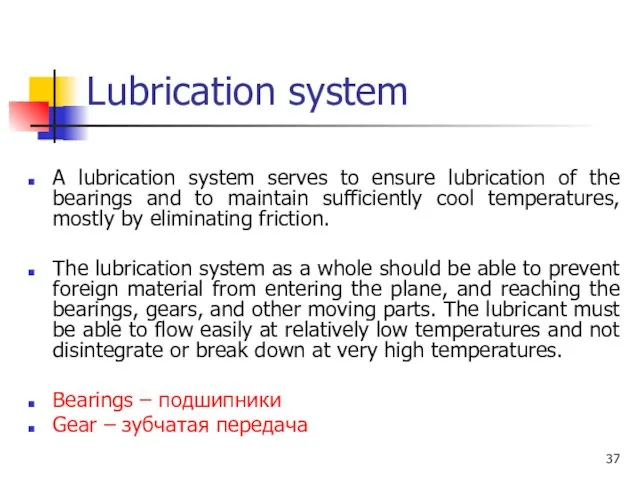
to maintain sufficiently cool temperatures, mostly by eliminating friction.
The lubrication system as a whole should be able to prevent foreign material from entering the plane, and reaching the bearings, gears, and other moving parts. The lubricant must be able to flow easily at relatively low temperatures and not disintegrate or break down at very high temperatures.
Bearings – подшипники
Gear – зубчатая передача
Слайд 38Gas turbine engines’ classification. Jet Engines
The three most common types of jet
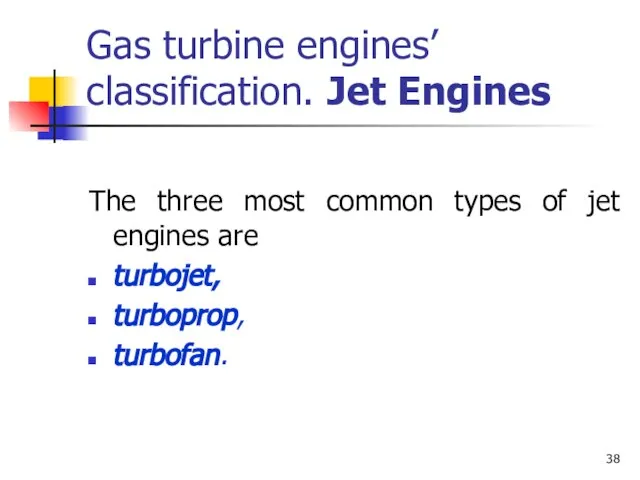
engines are
turbojet,
turboprop,
turbofan.
Слайд 39Turbojet engine
Air entering a turbojet engine is compressed and passed into a
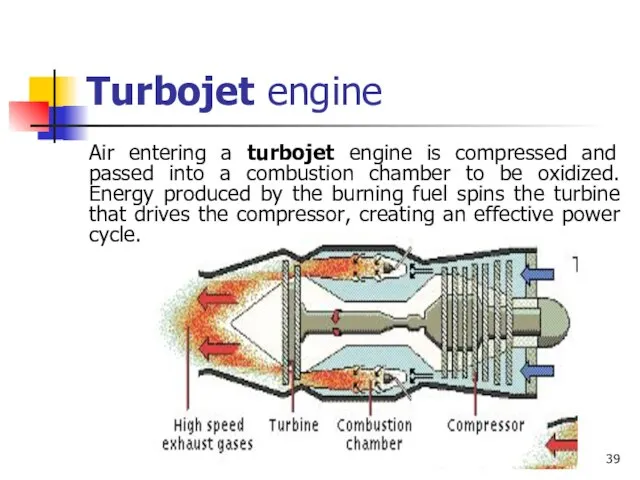
combustion chamber to be oxidized. Energy produced by the burning fuel spins the turbine that drives the compressor, creating an effective power cycle.
Слайд 40Turboprop engines
Turboprop engines are driven almost entirely by a propeller mounted in
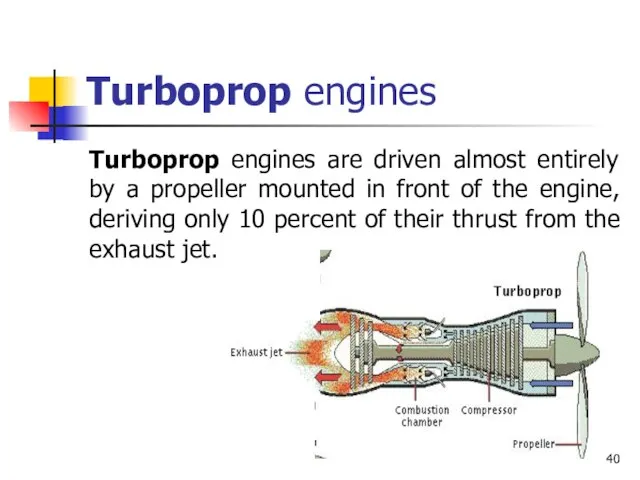
front of the engine, deriving only 10 percent of their thrust from the exhaust jet.
Слайд 41Turbofan engines
Turbofans combine the hot air jet with bypassed air from a
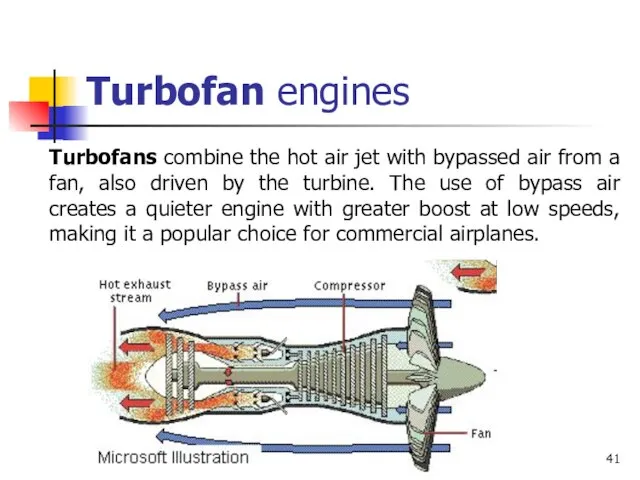
fan, also driven by the turbine. The use of bypass air creates a quieter engine with greater boost at low speeds, making it a popular choice for commercial airplanes.
Слайд 45Turbofan Engine
This Rolls-Royce Tay turbofan engine pushes nearly three times as much
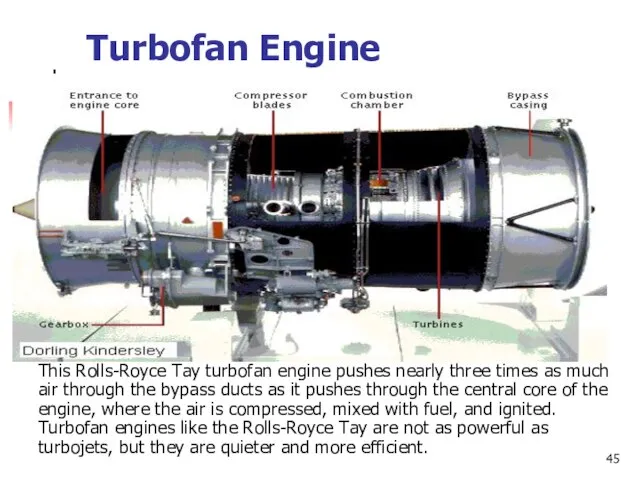
air through the bypass ducts as it pushes through the central core of the engine, where the air is compressed, mixed with fuel, and ignited. Turbofan engines like the Rolls-Royce Tay are not as powerful as turbojets, but they are quieter and more efficient.
Слайд 47A Pratt & Whitney F100 turbofan engine for the F-15 Eagle and
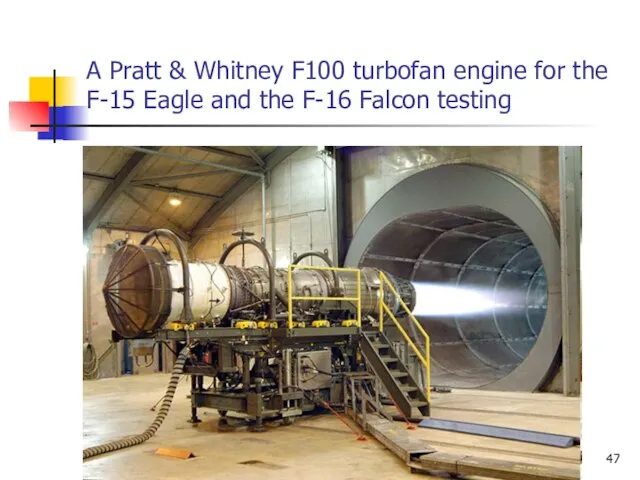
the F-16 Falcon testing
Слайд 48Engine design
Engines must be:
lightweight, as a heavy engine increases the empty weight
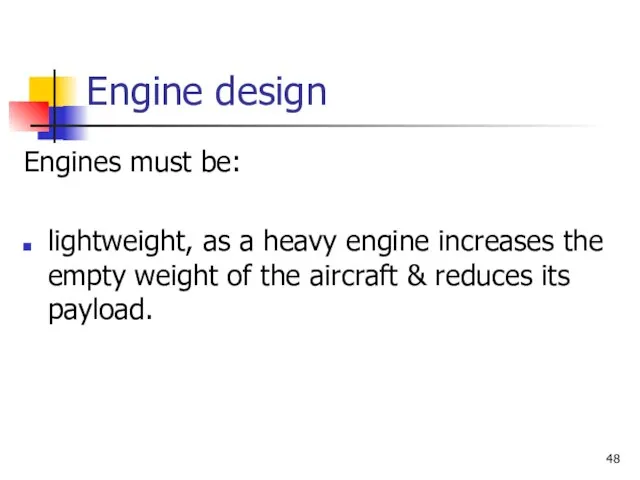
of the aircraft & reduces its payload.
Слайд 49Engine design
Engines must be:
small and easily streamlined; large engines with substantial surface
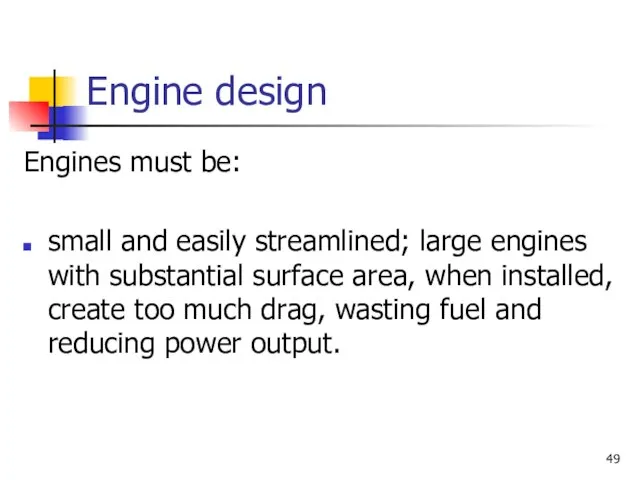
area, when installed, create too much drag, wasting fuel and reducing power output.
Слайд 50Engine design
Engines must be:
powerful, to overcome the weight and drag of the
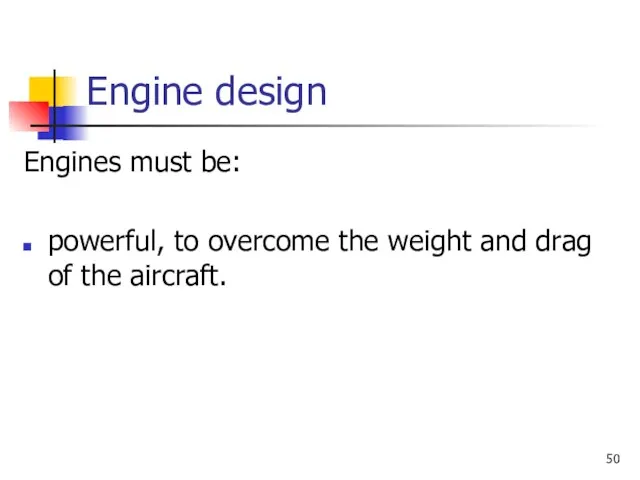
aircraft.
Слайд 51Engine design
Engines must be:
reliable, as losing power in an airplane is a
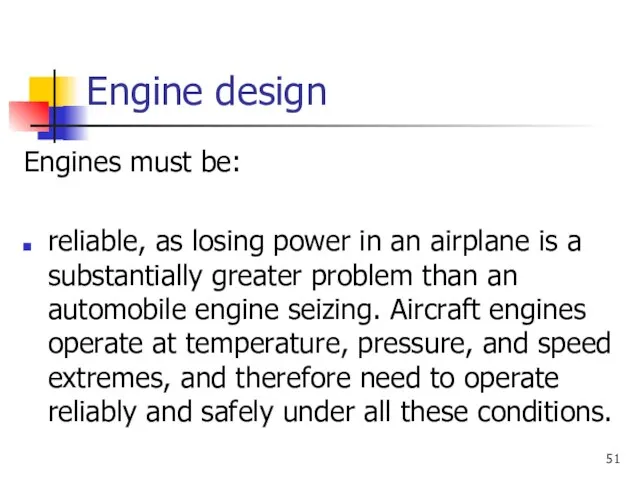
substantially greater problem than an automobile engine seizing. Aircraft engines operate at temperature, pressure, and speed extremes, and therefore need to operate reliably and safely under all these conditions.
Слайд 52Engine design
Engines must be:
repairable, to keep the cost of replacement down.
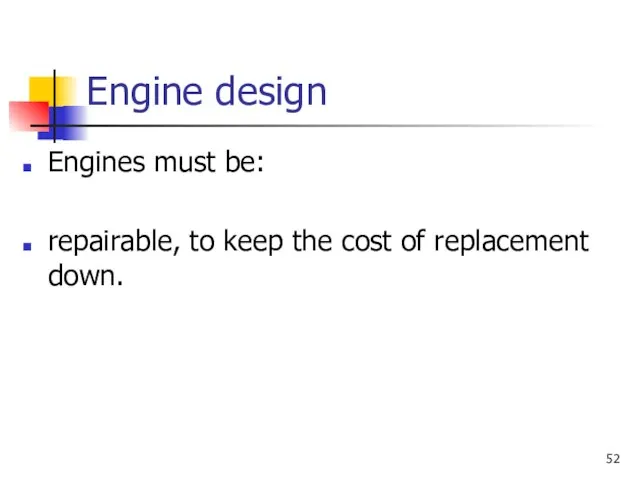
Слайд 53Aircraft noise
is defined as sound produced by any aircraft on run-up, taxiing,
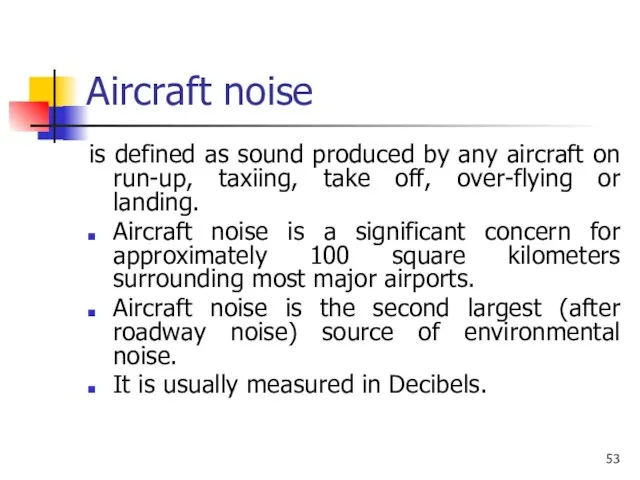
take off, over-flying or landing.
Aircraft noise is a significant concern for approximately 100 square kilometers surrounding most major airports.
Aircraft noise is the second largest (after roadway noise) source of environmental noise.
It is usually measured in Decibels.
Слайд 54Aircraft noise
Take-off of aircraft may lead to a sound level of more
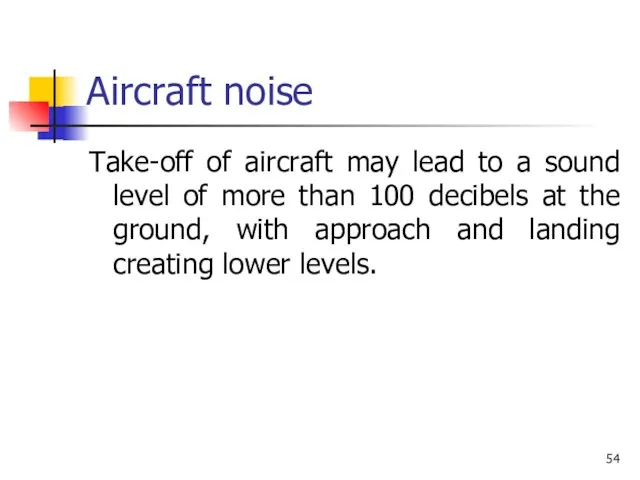
than 100 decibels at the ground, with approach and landing creating lower levels.
Слайд 55The W2/700 engine flew in the Gloster E.28/39, the first British aircraft
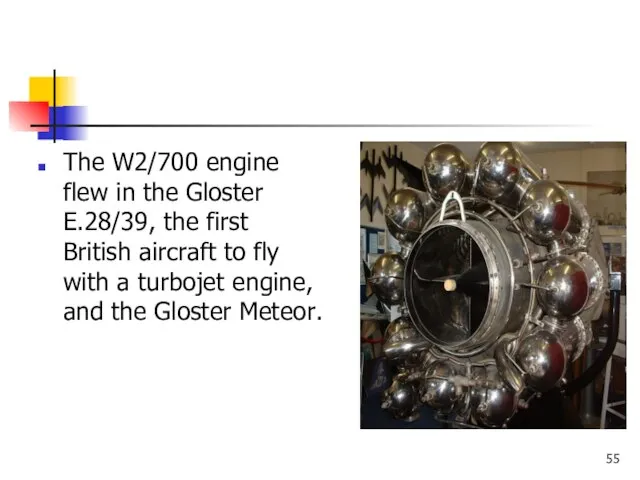
to fly with a turbojet engine, and the Gloster Meteor.
Слайд 56The Gloster E.28/39
(also referred to as the "Gloster Whittle", "Gloster Pioneer", or
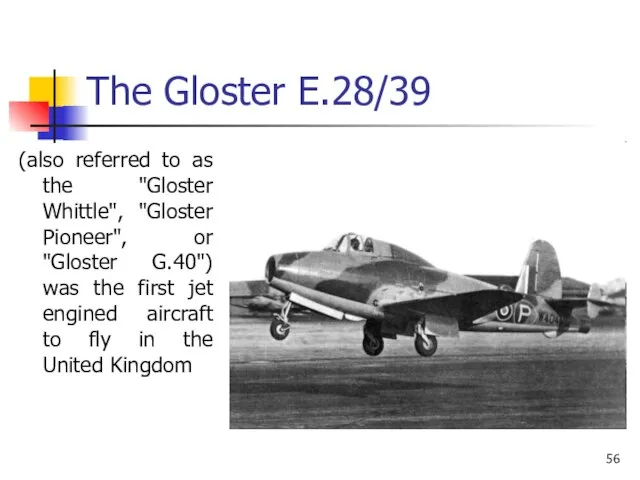
"Gloster G.40") was the first jet engined aircraft to fly in the United Kingdom
Слайд 87Rolls Royce Trent
is a family of high bypass turbofan engines manufactured by
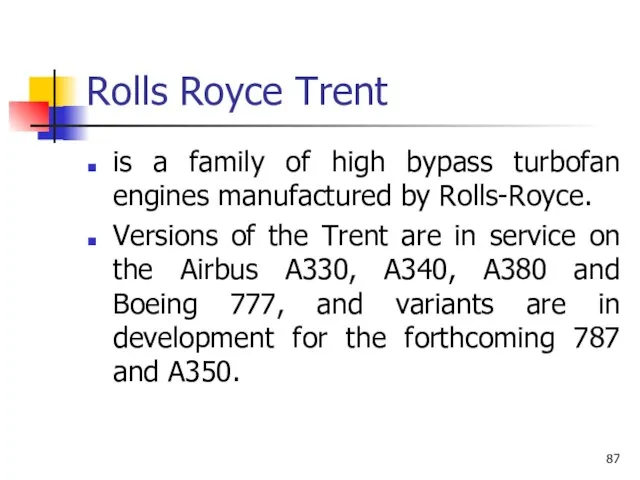
Rolls-Royce.
Versions of the Trent are in service on the Airbus A330, A340, A380 and Boeing 777, and variants are in development for the forthcoming 787 and A350.
Слайд 88Rolls-Royce Trent 900 on A380 prototype
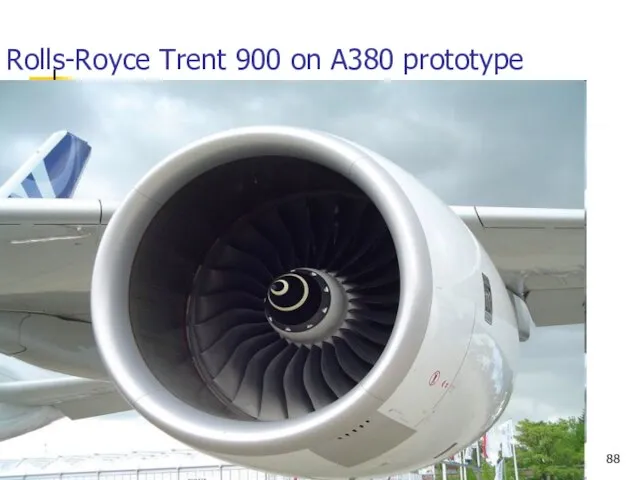






















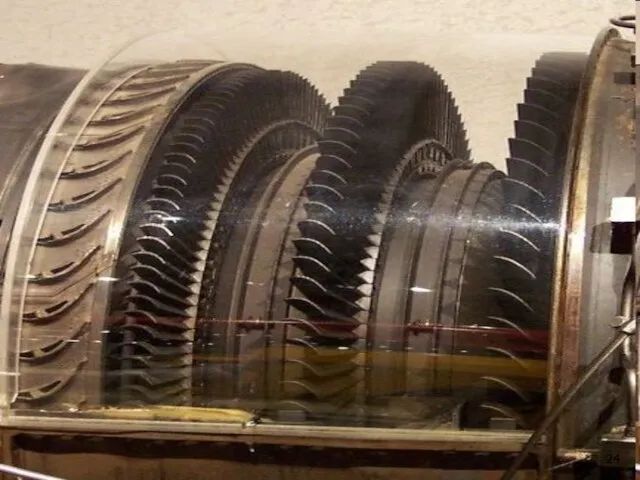

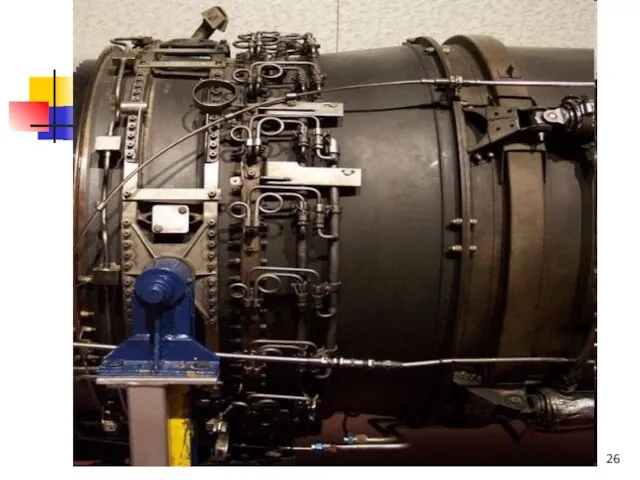


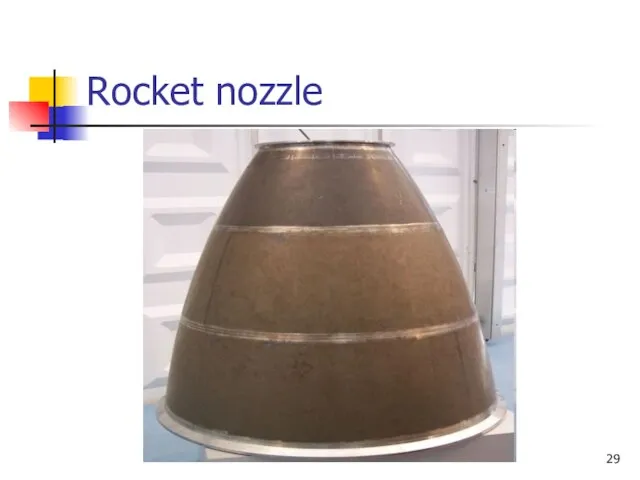
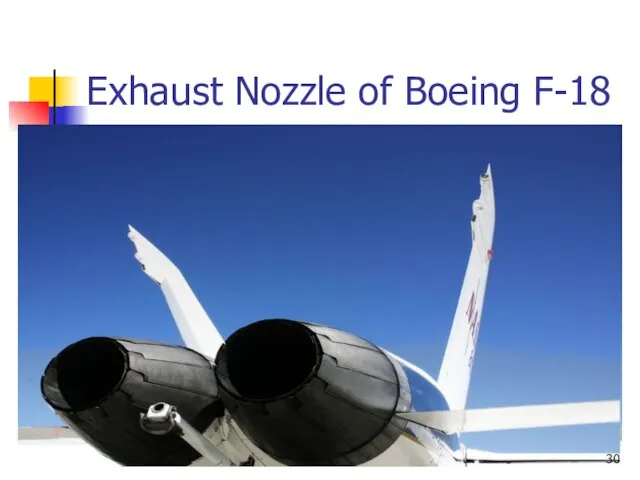
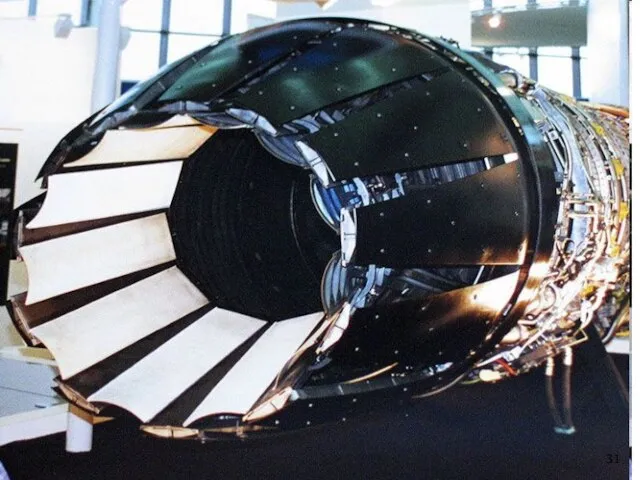










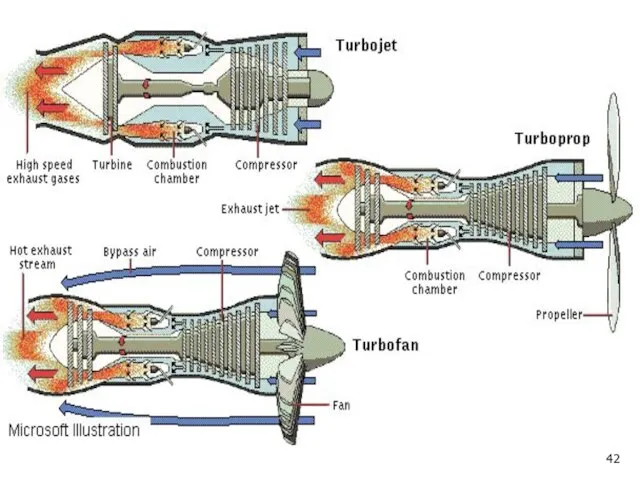
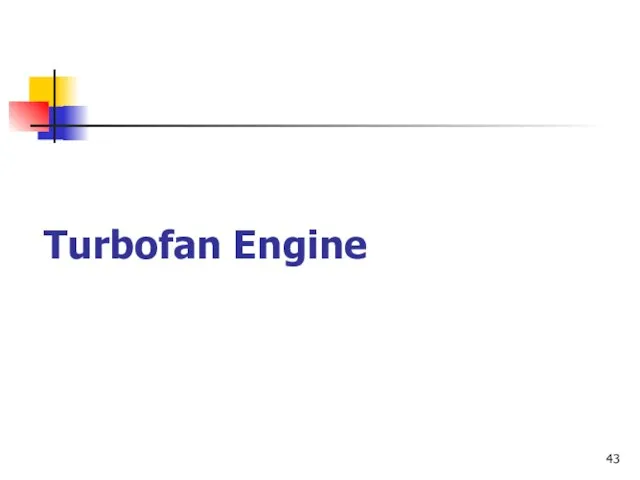
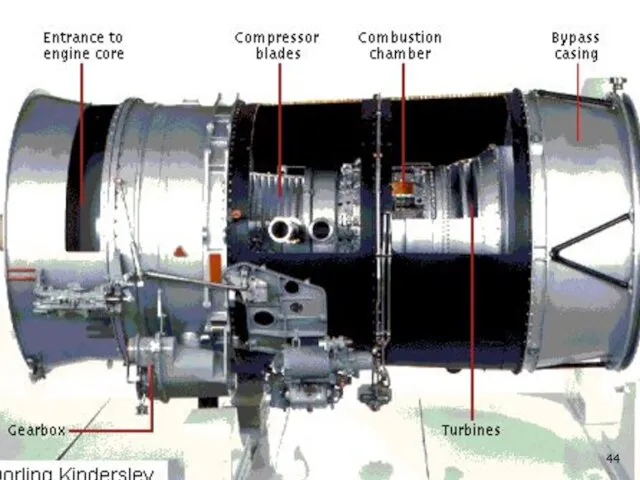

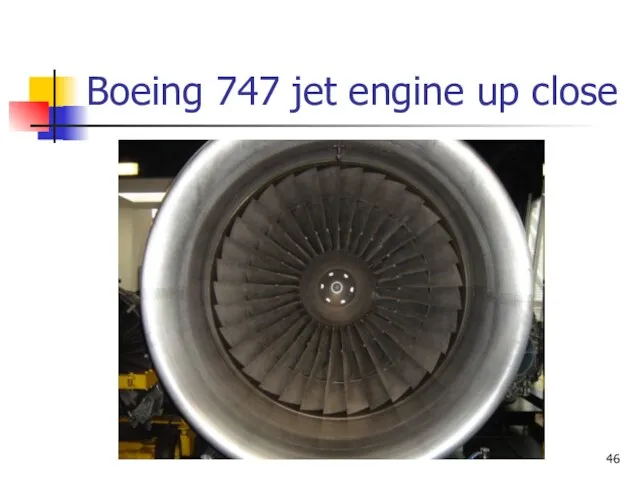










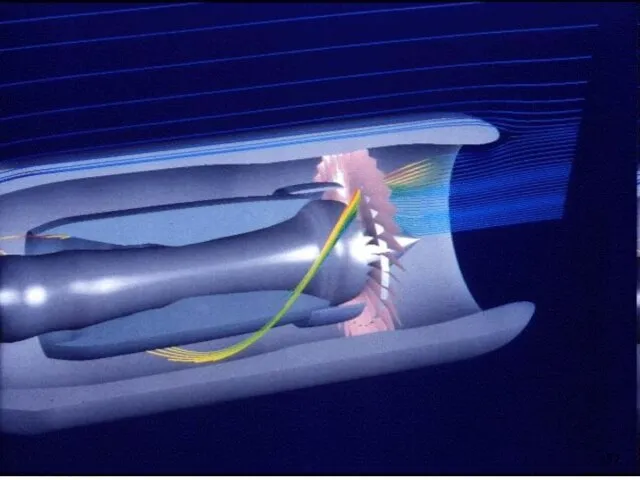
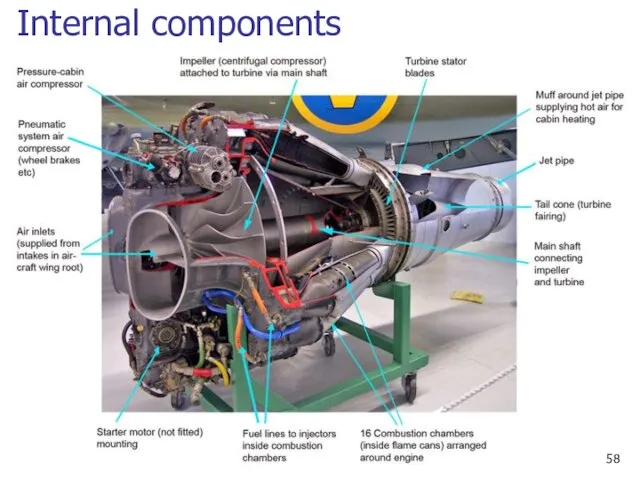
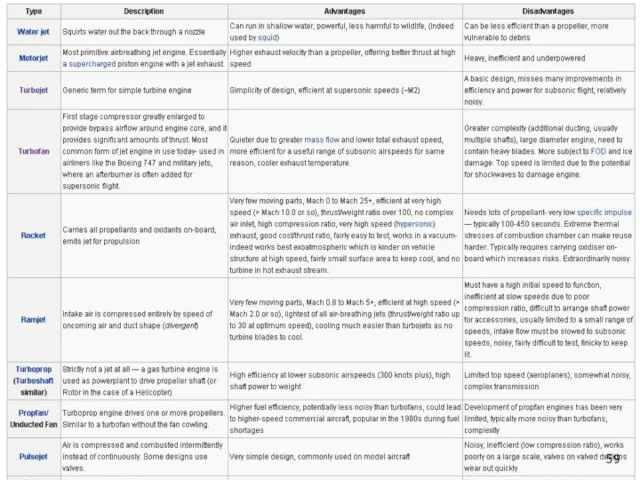
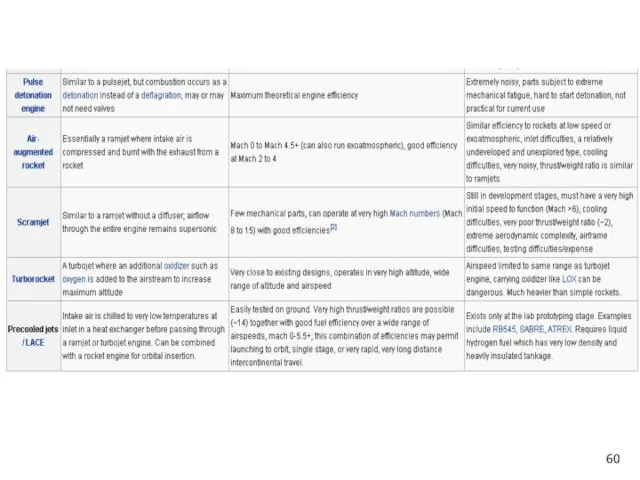
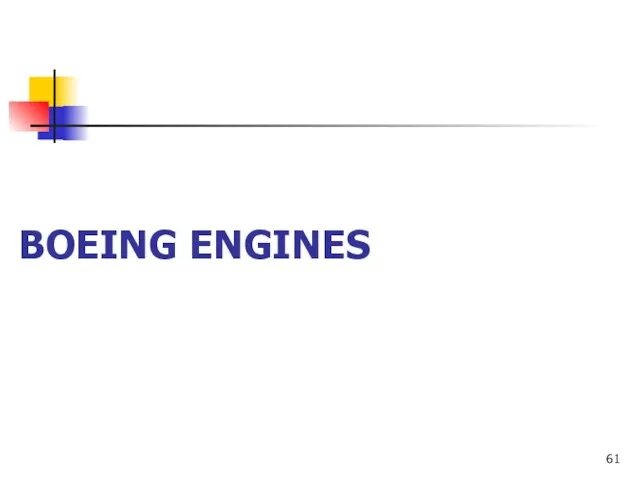
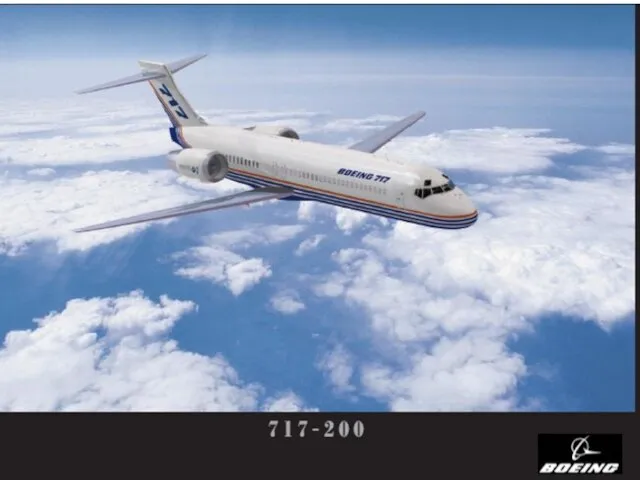
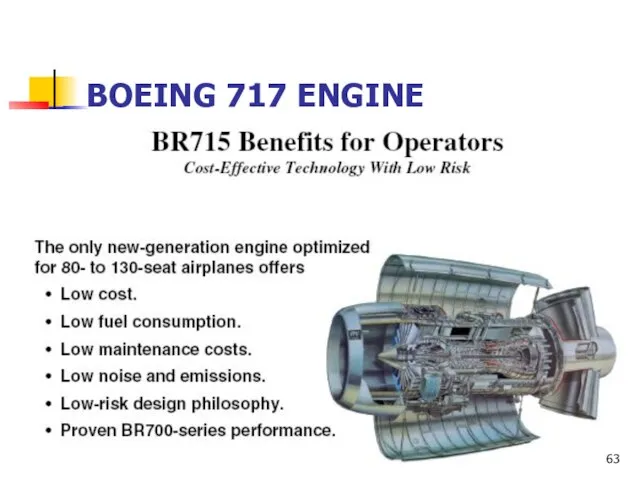
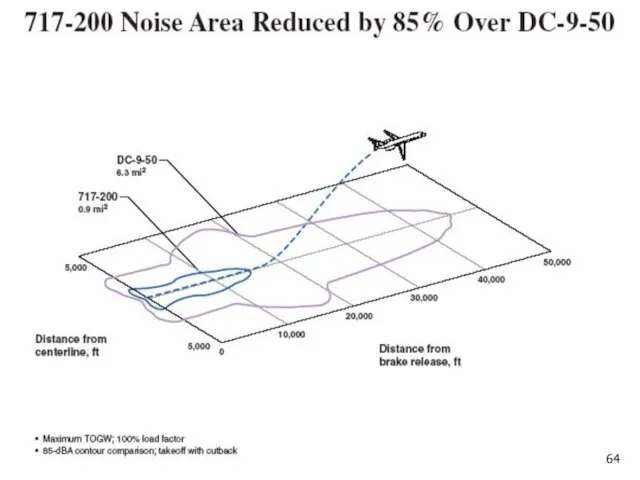
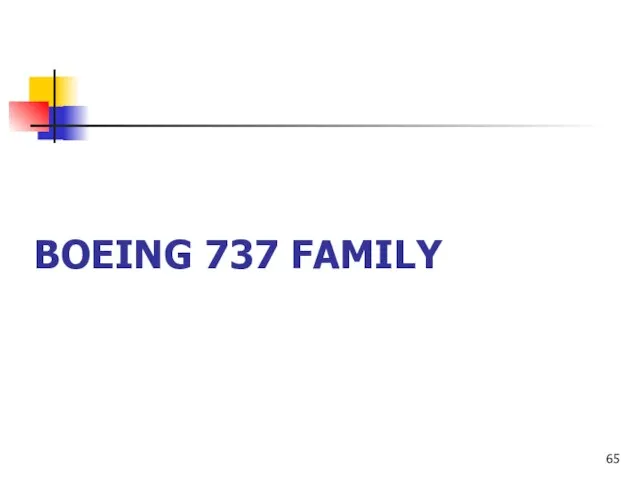
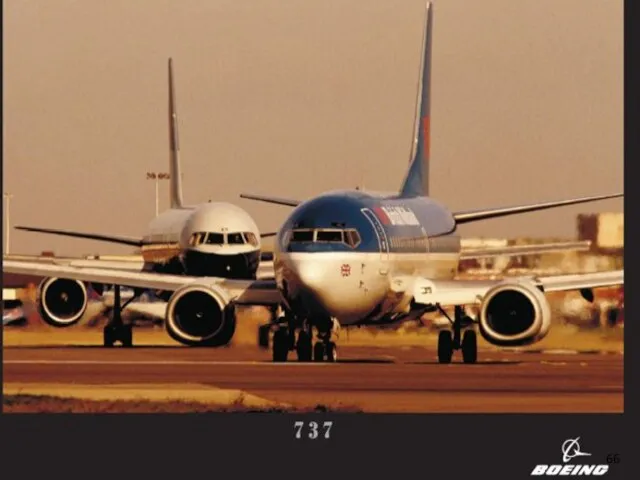
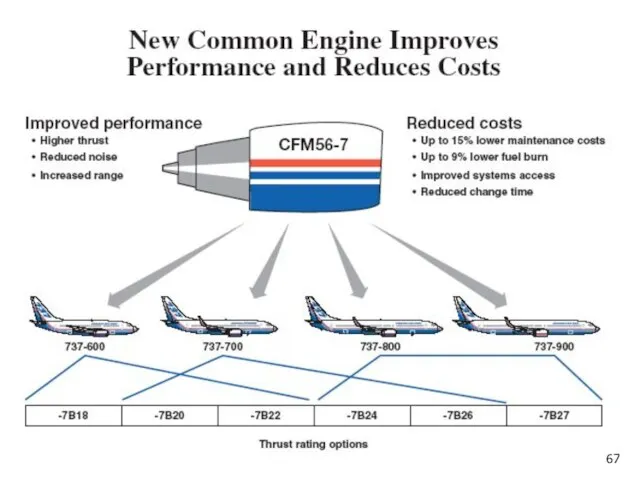
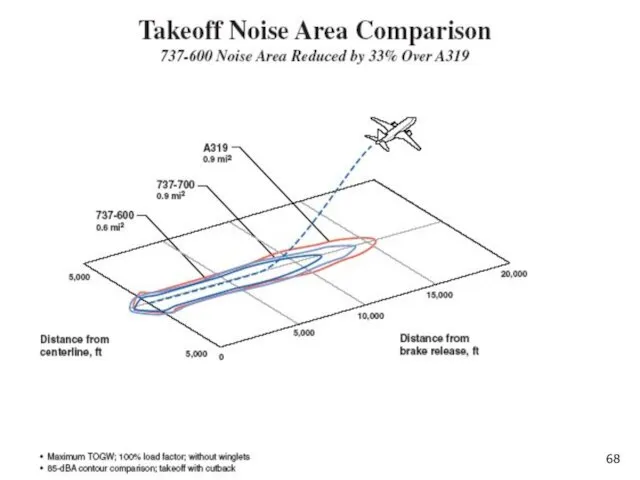
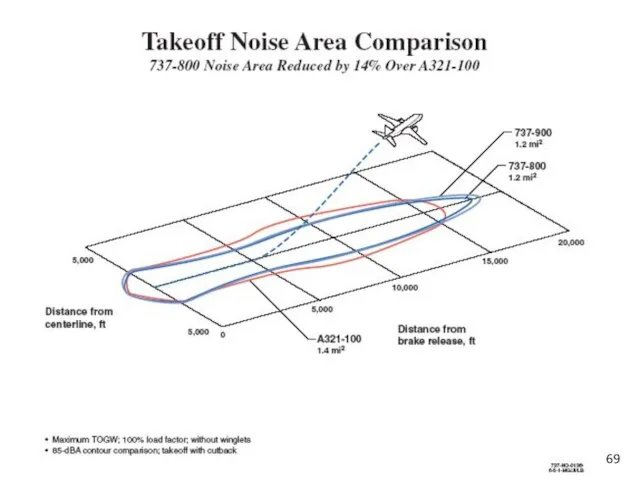
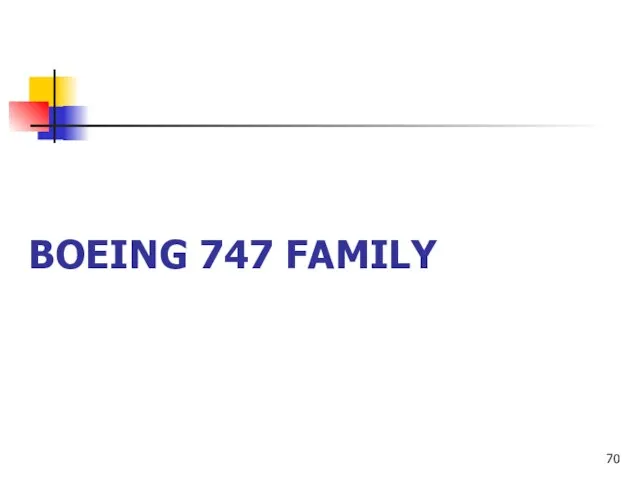
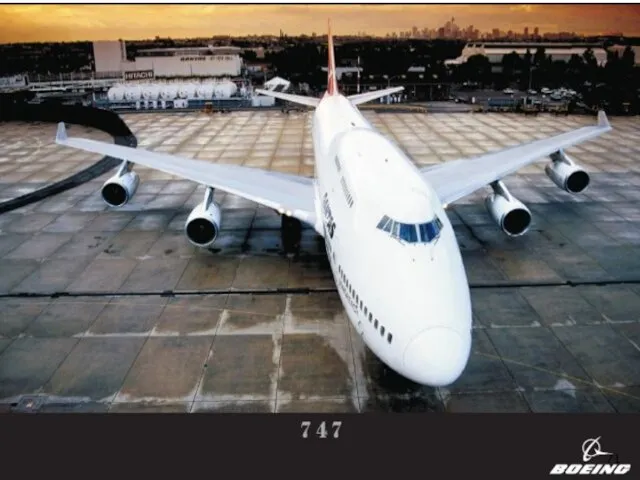
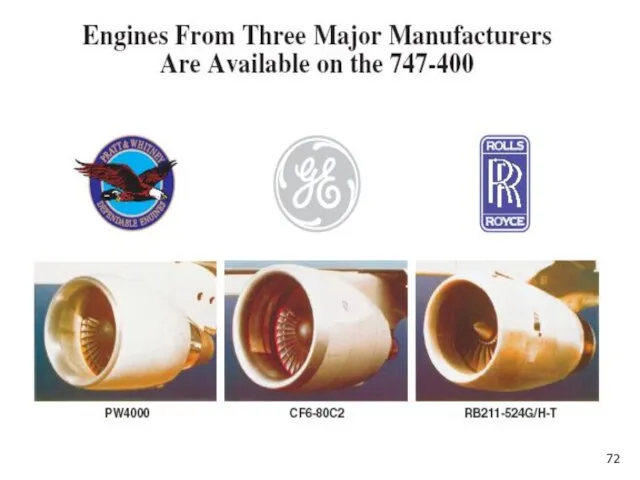
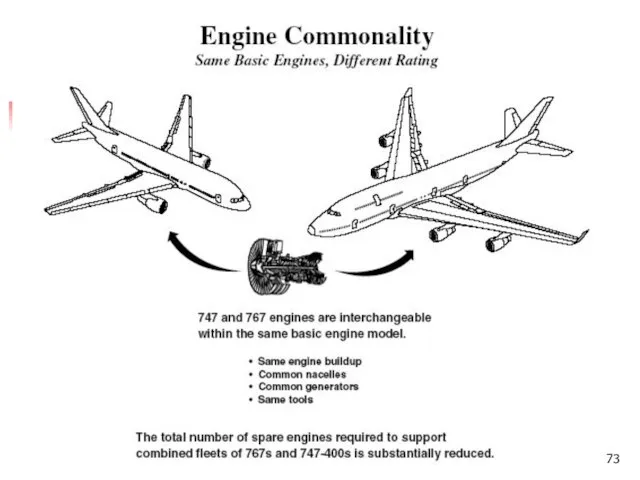
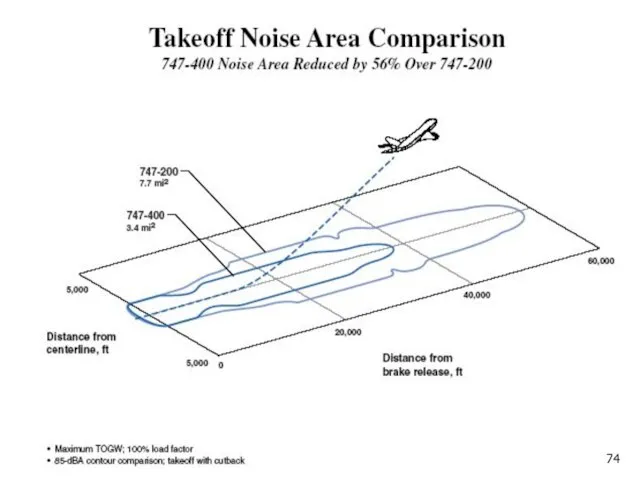
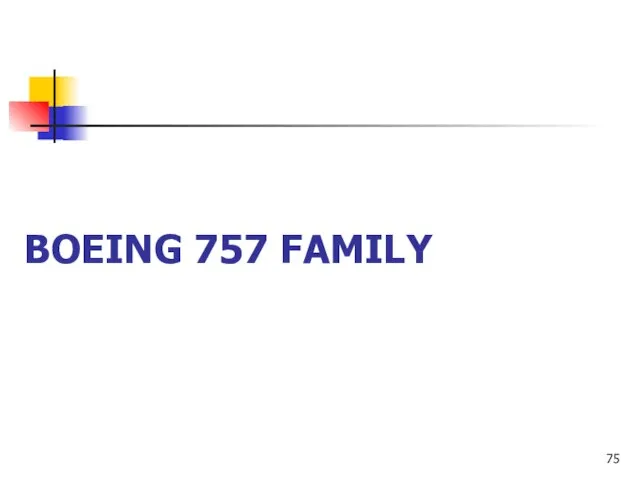
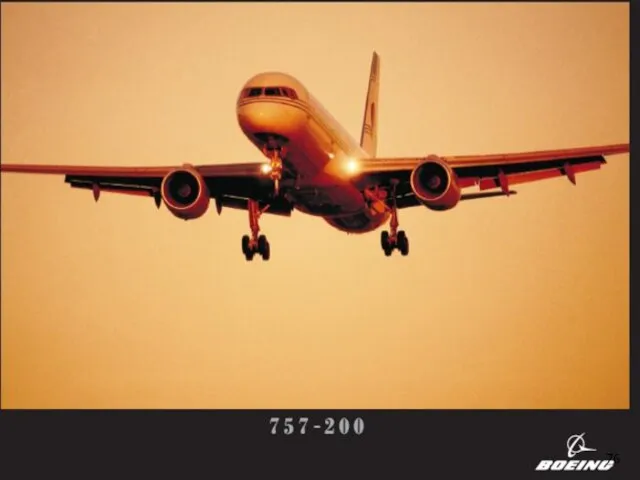
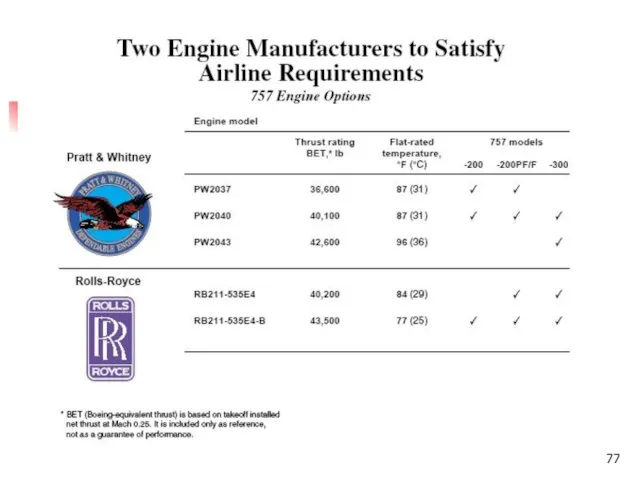
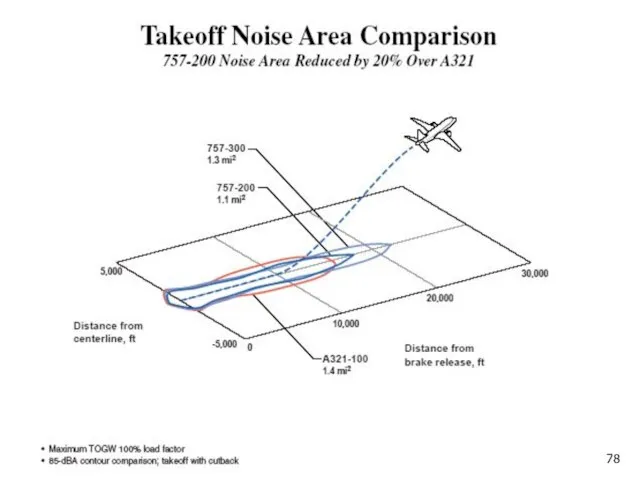
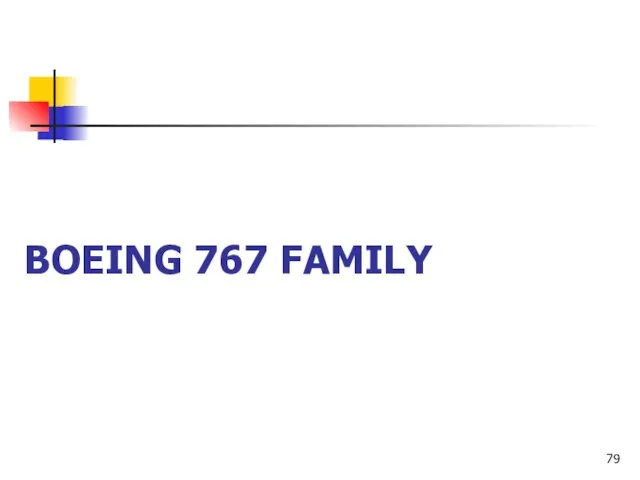
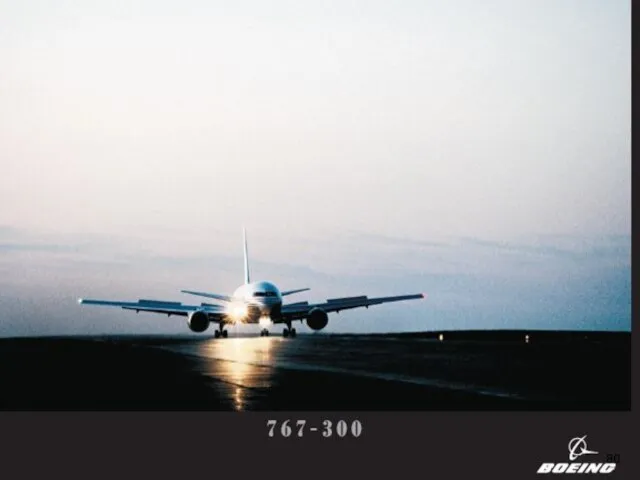
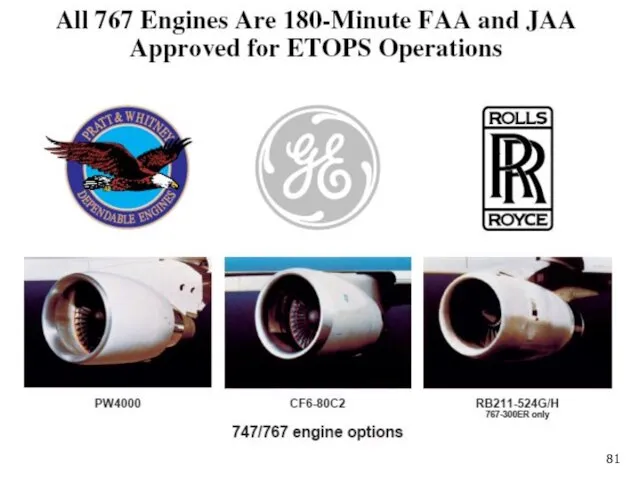
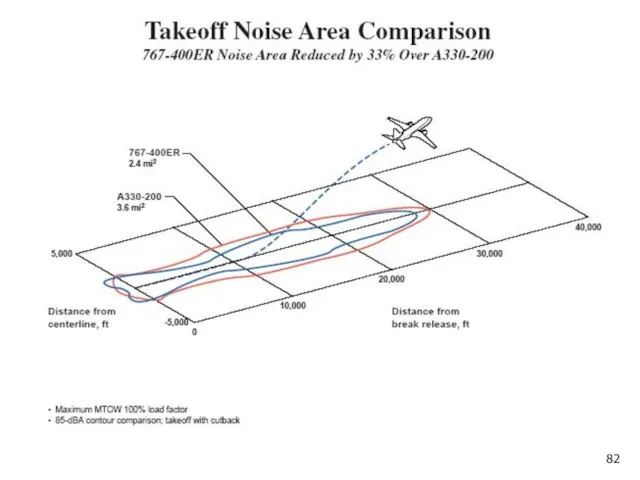
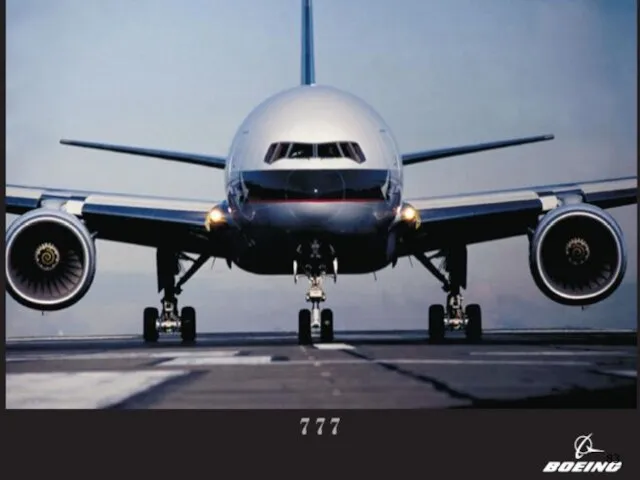
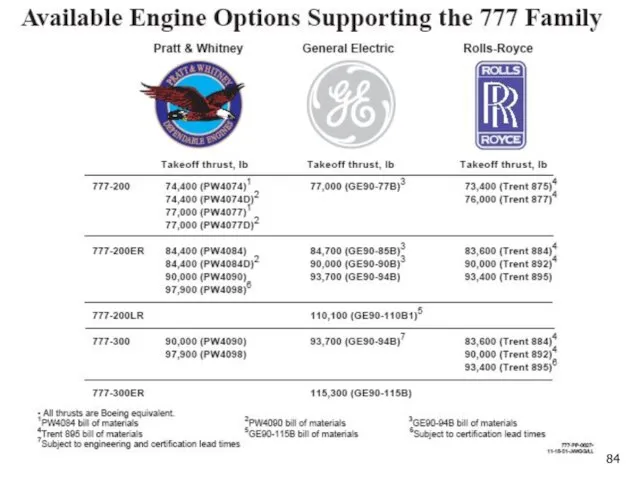
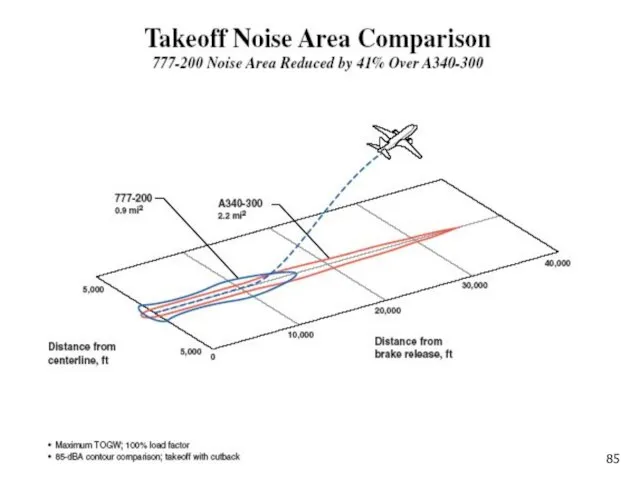
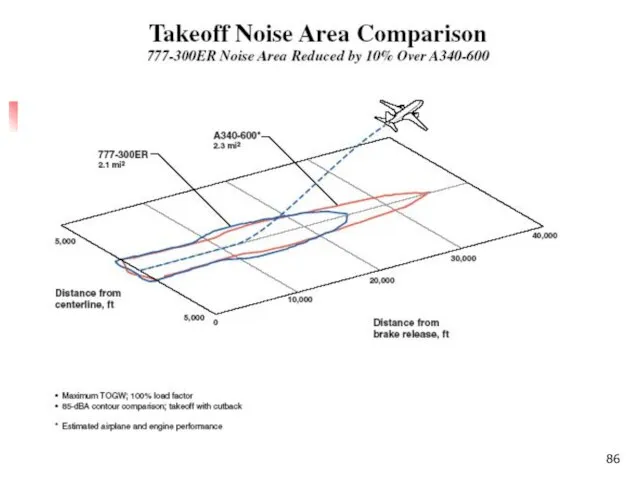


 Социальное служение Русской Православной Церкви
Социальное служение Русской Православной Церкви Методы контроля за процессом разработки
Методы контроля за процессом разработки Поделки к Новому Году
Поделки к Новому Году Living in a big city
Living in a big city Каталог. Фитиль ватный ТУ 8195-023-44881728-2016. Предназначен для парения, для подачи испаряемой жидкости к испарителю
Каталог. Фитиль ватный ТУ 8195-023-44881728-2016. Предназначен для парения, для подачи испаряемой жидкости к испарителю Объекты планирования
Объекты планирования Planning
Planning Define or give an example of the following
Define or give an example of the following ВВЕДЕНИЕ В MVVM Дмитрий Кудрявцев http://dimakudr.blogspot.com/
ВВЕДЕНИЕ В MVVM Дмитрий Кудрявцев http://dimakudr.blogspot.com/ Тема коммерческого проекта: Клининговая компания «М-Клининг»
Тема коммерческого проекта: Клининговая компания «М-Клининг» Концепция T-shaped management (TSM)
Концепция T-shaped management (TSM) Основы программированияна Visual Basic
Основы программированияна Visual Basic Презентация на тему Опасные ситуации криминального характера
Презентация на тему Опасные ситуации криминального характера Устройство, монтаж и техническое обслуживание приемно-контрольных приборов ПКО-8/4 GSM
Устройство, монтаж и техническое обслуживание приемно-контрольных приборов ПКО-8/4 GSM Драматический театр 19 век
Драматический театр 19 век Презентация на тему Творчество Ивана Андреевича Крылова
Презентация на тему Творчество Ивана Андреевича Крылова  ПРАВОВОЙ ТУРНИР. Первый тур В какой сказке личность во всех отношениях серая осуществляет план убийства двух лиц и лишь благодаря
ПРАВОВОЙ ТУРНИР. Первый тур В какой сказке личность во всех отношениях серая осуществляет план убийства двух лиц и лишь благодаря  Презентация на тему Движение под действием нескольких сил
Презентация на тему Движение под действием нескольких сил  Взаимосвязь техники чтения и качества успеваемости учащихся среднего звена
Взаимосвязь техники чтения и качества успеваемости учащихся среднего звена Креативна
Креативна Безопасность, гигиена, эргономика, защита информации.
Безопасность, гигиена, эргономика, защита информации. Иприт
Иприт Смута в Российском государстве
Смута в Российском государстве Зооморфизмы во французских пословицах и поговорках
Зооморфизмы во французских пословицах и поговорках Региональные центры чтения: перспективы координации и взаимодействия
Региональные центры чтения: перспективы координации и взаимодействия SECURITY
SECURITY  Портреты глуповских градоначальников
Портреты глуповских градоначальников Утонем?
Утонем?